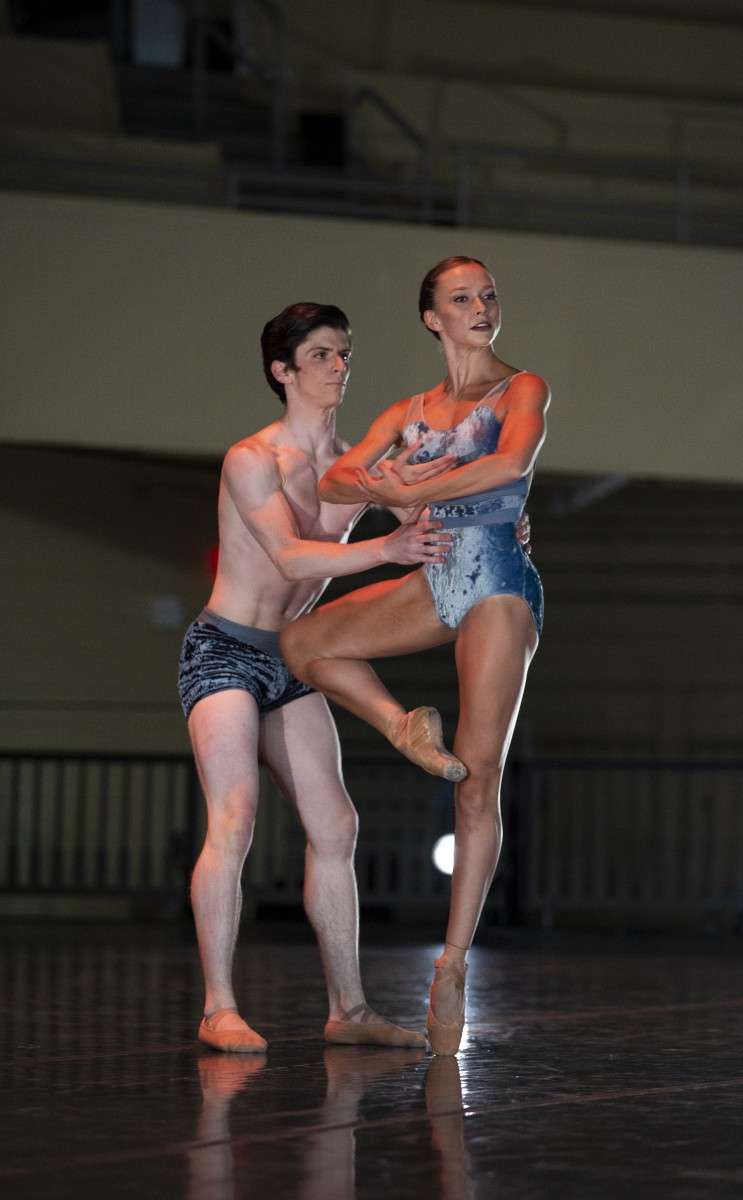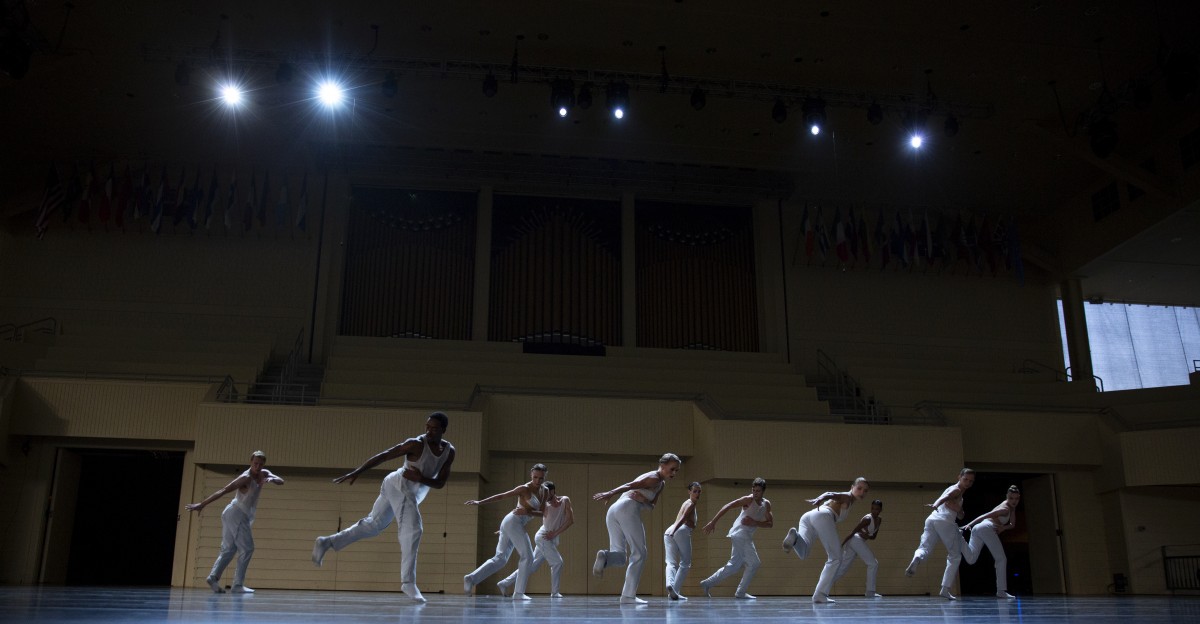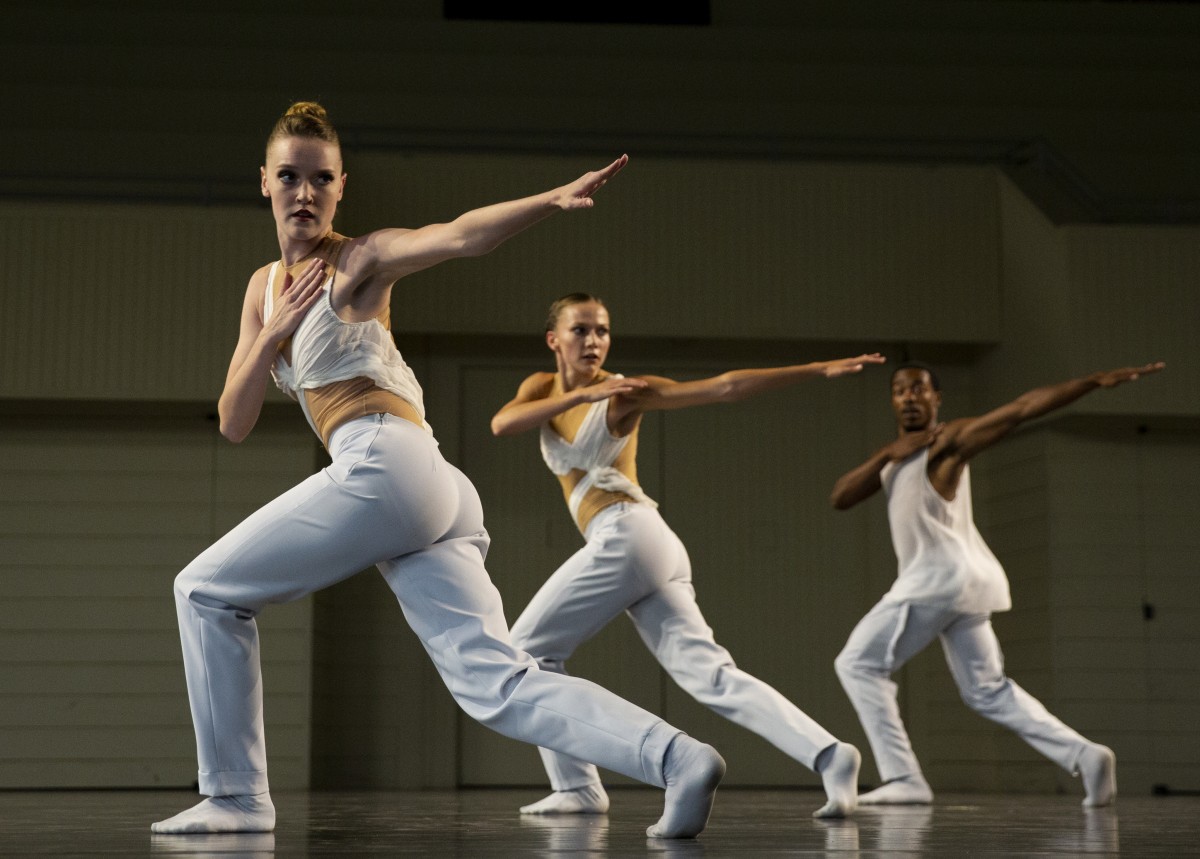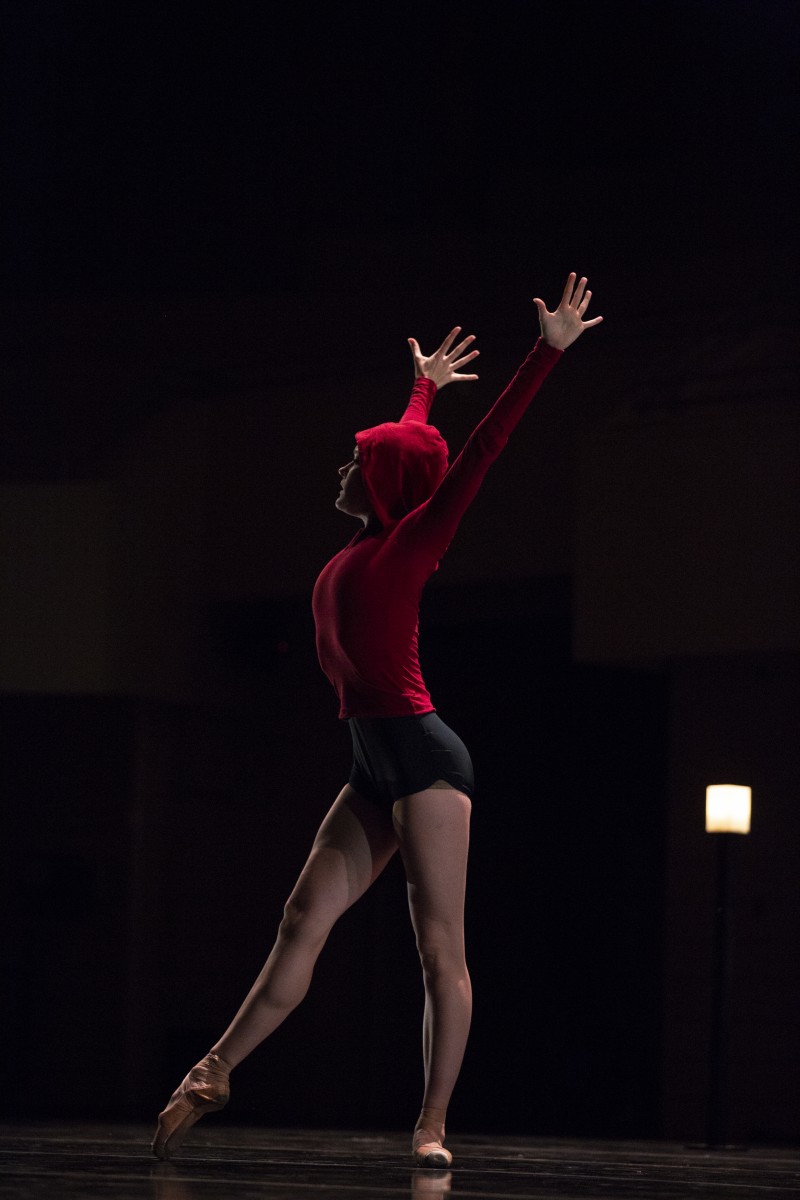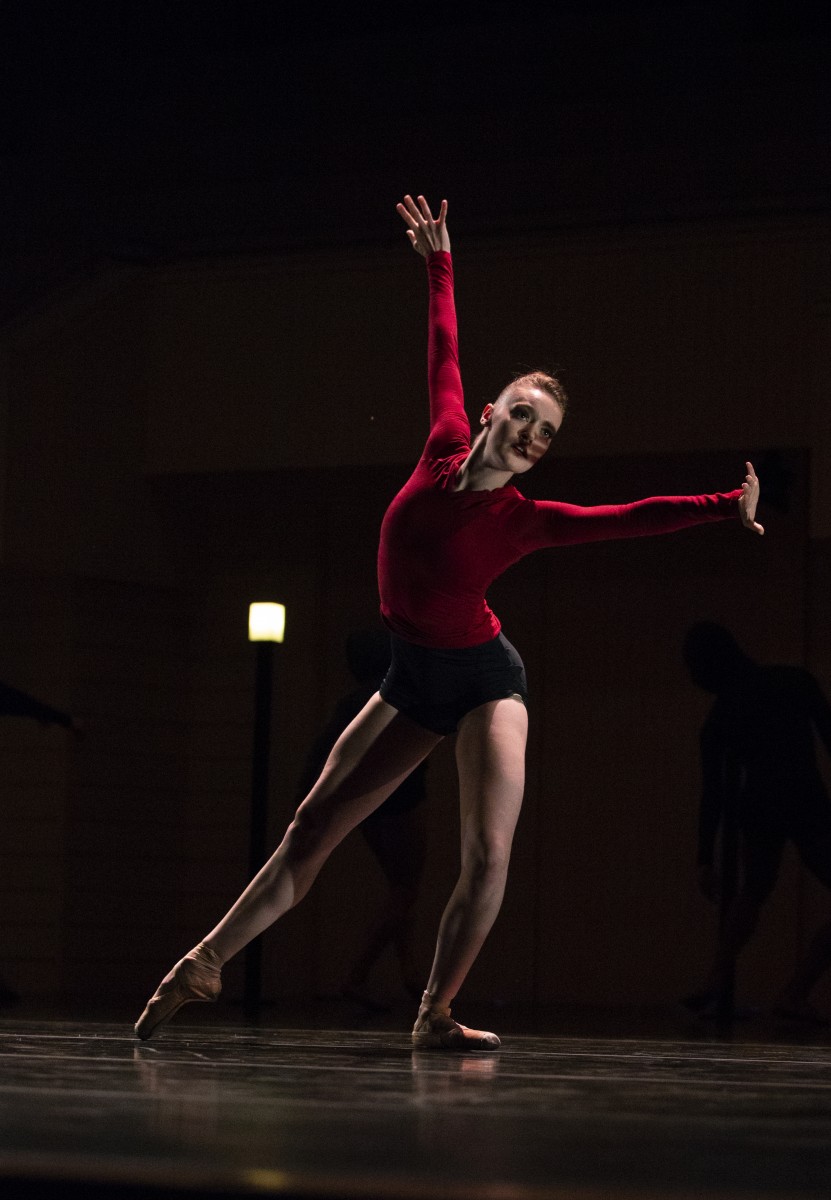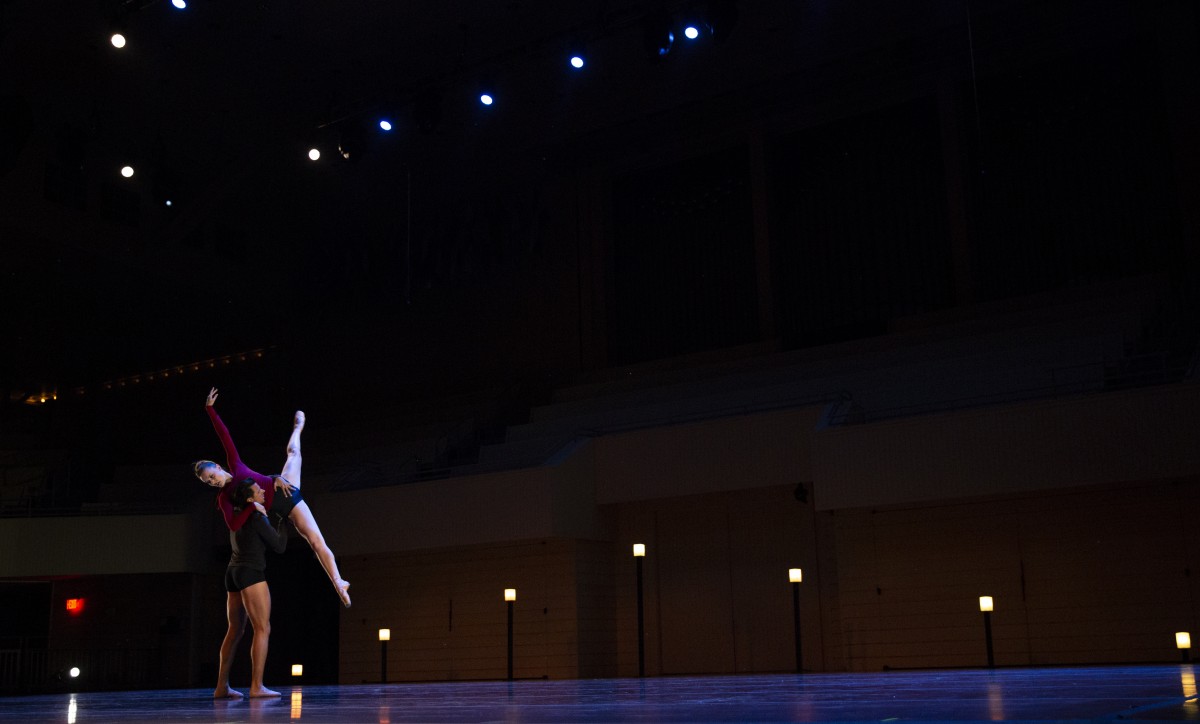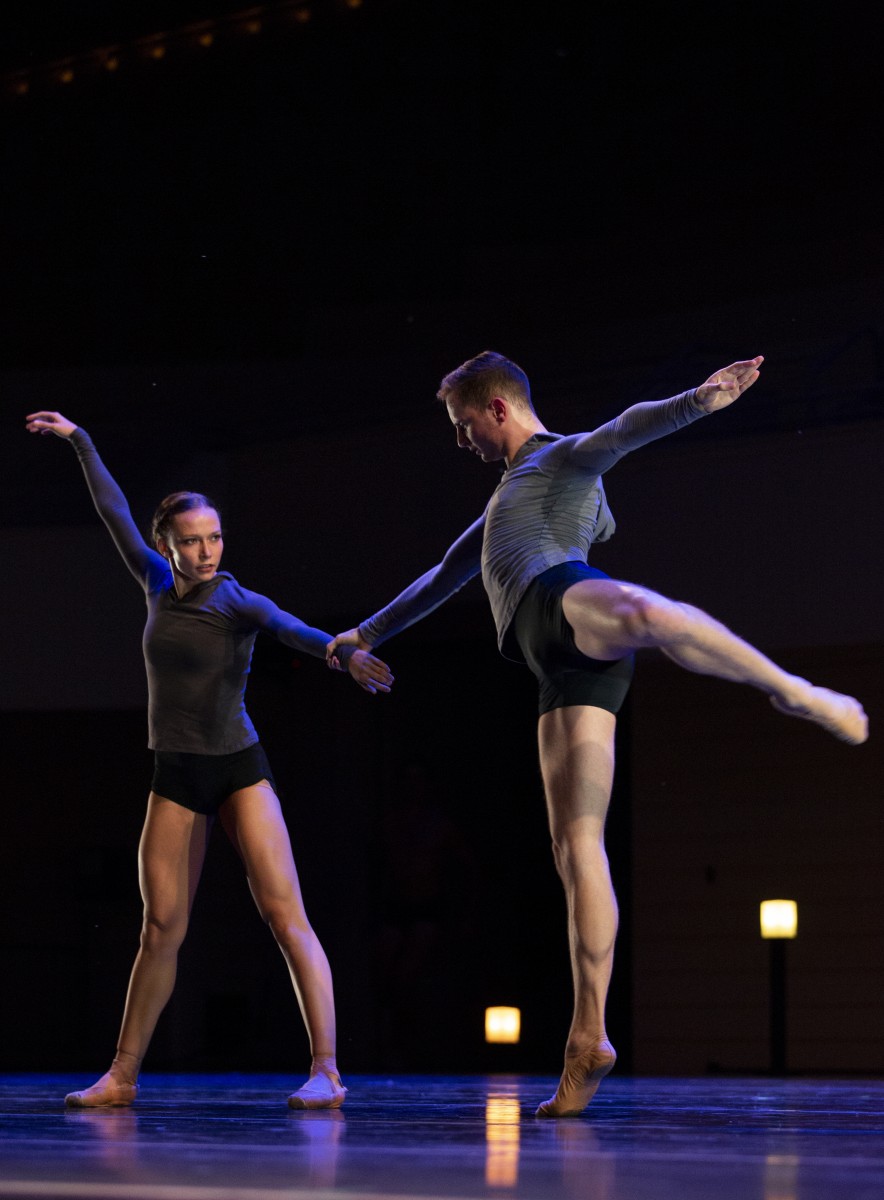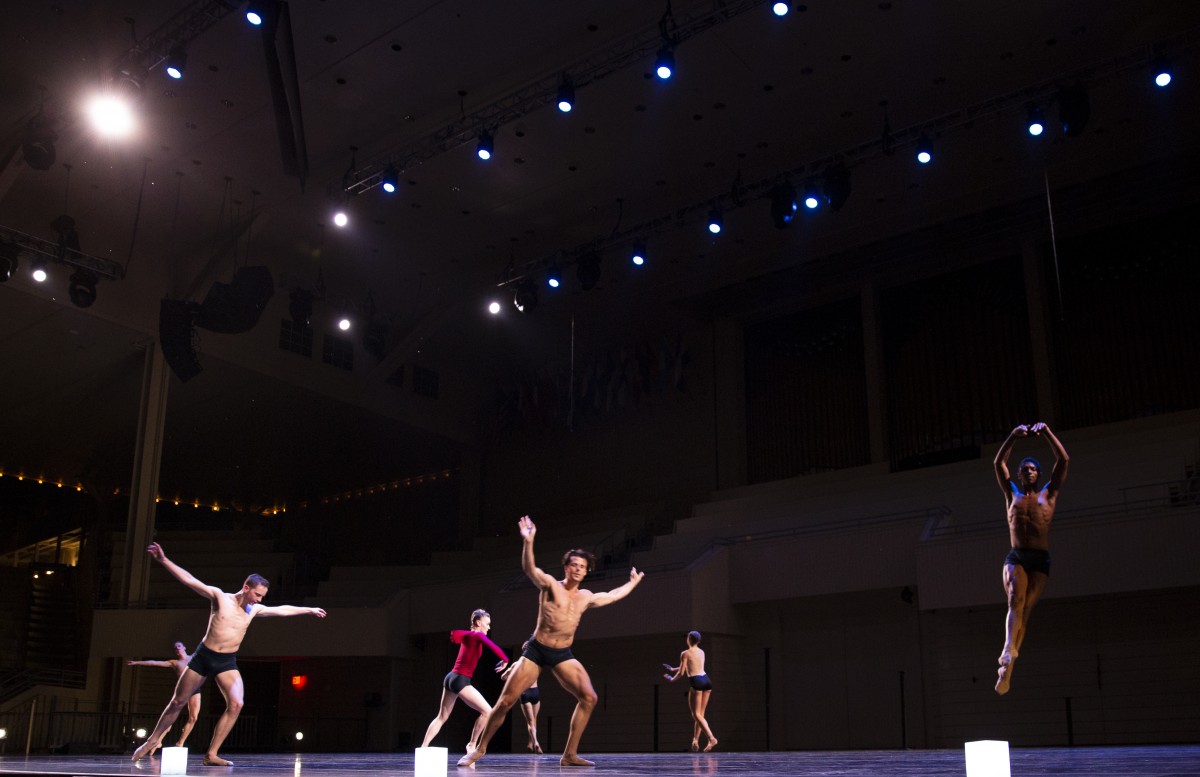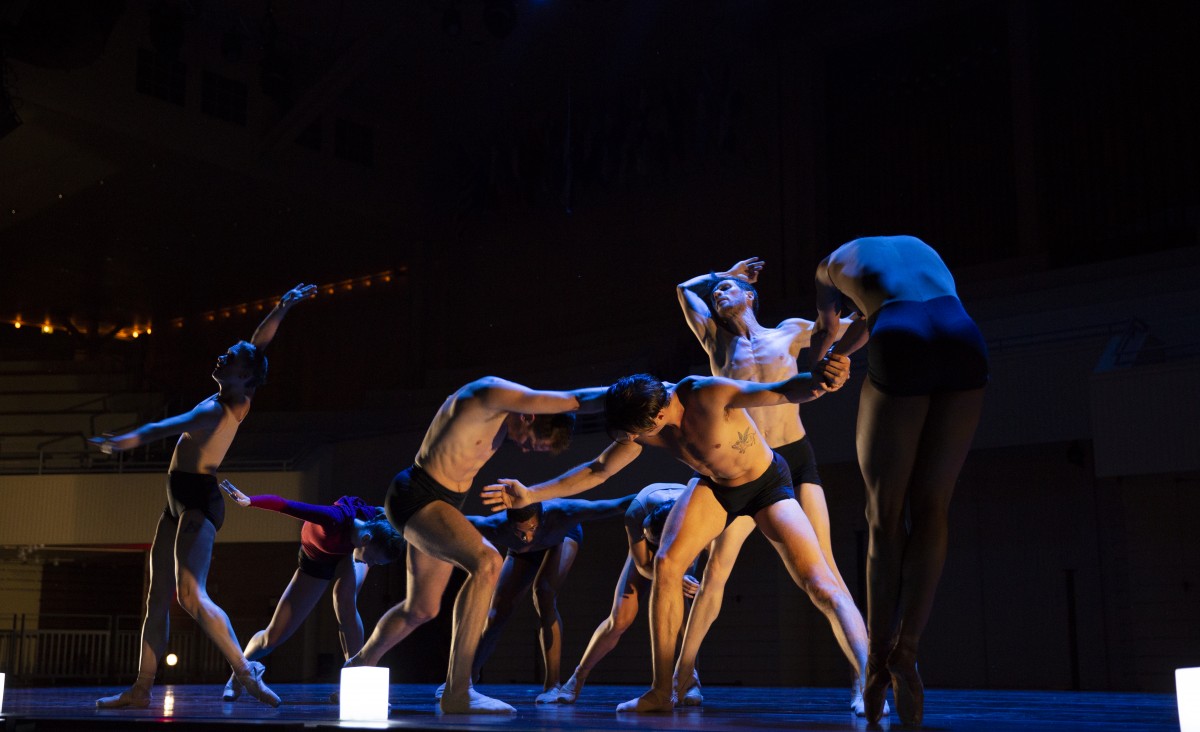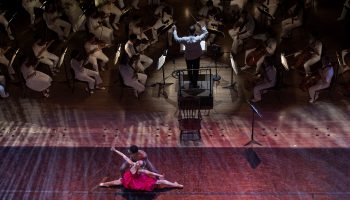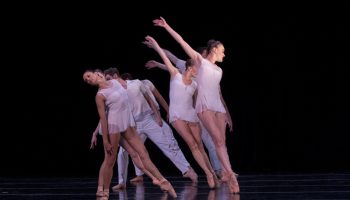Review by Steve Sucato
Hope Muir’s new look Charlotte Ballet closed its annual summer residency at Chautauqua Wednesday evening in the Amphitheater with “Made in Charlotte,” a program of contemporary ballets created during the 2017-18 home season in Charlotte. As such, the audience was treated to a collection of top-notch dance works that were polished to near perfection and performed flawlessly by the company’s dancers.
The program opened with perhaps its weakest link, company dancer Juwan Alston’s pas de deux “Huracán” (2017). Performed to composer Maurice Ravel’s Sonata for Violin and Cello, fourth movement — “Vif, avec entrain,” dancer Peter Mazurowski began a solo dense with pirouettes, jumps and turns, followed in succession by partner Elizabeth Truell, who danced similarly. When the two finally came together to dance, there was an uncertainty to their relationship, which appeared mostly detached. Only in brief spurts did we see anything nearing hurricane-level volatility as the work’s title suggests, such as when Truell, out of the blue, jumped on Mazurowski’s back.
Primarily the work was a chance for the 20-something Alston to cut his teeth as a budding dance maker. Alston’s choreography, while technique-driven and wonderfully danced, leaned toward academic.
Next came former Netherlands Dance Theater dancer Bryan Arias’ “When Breath Becomes Air” (2018). Arias, who had a stint early on in his career as a dancer with North Carolina Dance Theatre’s (now Charlotte Ballet) second company, returned to the company as an up-and-coming choreographer pretty much typecast fit for Artistic Director Muir’s vision for the type of works the company will be performing going forward.
“When Breath Becomes Air” was an inspired contemporary dance work for 11 dancers in all-white costumes and socks set to composer Ezio Bosso’s “Six Breaths.” It began with a group section that harkened back to the geometric patterning of contemporary dance pioneer Laura Dean, while at the same time pushed at the boundaries of today’s contemporary dance movement language.
Marching about the stage in unison, the dancers, like watching a sequenced light show, flashed hand and arm movements, wiggled their fingers as if indicating falling rain and bent and waved their arms in unique patterns that were boundless in their creativity.
While the opening group section painted a delightfully new picture of contemporary dance, the work’s latter half reverted to the familiar brush strokes used by many of today’s choreographers; chiefly Dwight Rhoden, who Arias worked with while at NCDT II and as a dancer with Rhoden’s troupe Complexions Contemporary Ballet.
Like one long-running, albeit crazy good, pas de deux in which the dance couple is swapped out every five minutes with a new one, the choreography slowly began to offer little different from what had come before. Touch-initiated movement phrases, dance floor slides and athletic lifts and holds came, went, and then came again with each new dancer pairing. Said to be in part Arias’ desire to make the invisible, visible, “When Breath Becomes Air’s” latter section was one of those rare cases in dance when there actually may have been too much of a good thing.
The program’s second half led off with award-winning choreographer Robyn Mineko Williams’ sparsely lit “To Clear” (2018). With it, Williams, who danced with Muir at Hubbard Street Dance Chicago, created an abstract contemporary dance work largely inspired by its commissioned original score by Robert F. Haynes and Tony Lazzara.
The dance equivalent to “shoe-gazer” alternative music, Williams’ piece was quietly contemplative and lulling. Dancers often stood about inactive, watching fellow performers delve into intertwining, slinky partnered dance sequences. Two of them even sat in chairs in the downstage corners during the entire piece, wearing dark gloves and supposedly working hand-held lights, although I didn’t see them holding anything.
As in many of Williams’ works, “To Clear” evoked a sense of inherent beauty and drama. Williams’ choreography is instinctual and about movement in moods. If one were to look for meaning in it, they need not look any further than their own heart and mind. No two people will view it the same. Perhaps the only tie to the work’s title came in “clearing” motions throughout the work in which dancers moved others out of their paths by pushing or pulling them aside.
To close “Made in Charlotte,” as if the previous works weren’t enough to satiate most any dance lover’s thirsts, San Francisco Ballet dancer Myles Thatcher’s “Redbird” took things to a whole other level of choreographic sophistication. Inspired by a recent loss in Thatcher’s life, the ballet in symbolic ways was his sorting out the processes of grief. Rooted in classical ballet but with a decidedly contemporary look, “Redbird” began with the redbird herself, dancer Sarah Lapointe in a red-hooded shirt lying on the stage floor next to one of seven glowing lanterns (some on stands) positioned in a half-circle around the stage.
Rising from the floor as if just awoke, the statuesque Lapointe — all legs and graceful ballet arms — delivered an opening salvo of solo dancing that was textbook perfect and spell-bindingly beautiful.
Six more dancers in grey and black hoodies filtered onto the stage to power through more delicious dance sequences before moving off. This streaming of dancers on and off the stage in varying numbers continued throughout the ballet but never left the stage empty or devoid of interesting movement.
Set to an eclectic sound score featuring music from Murcof, Scanner, Schubert and Satie, “Redbird” had a marvelously peculiar mix of to-die-for dancing sprinkled with quirky symbolic moments. Many of those carried out by Lapointe, who frequently left the stage only to briefly return to pull on the hoods of dancers who had removed them, and then dart off again or after a poignant pas de deux with dancer Drew Grant in which she repeatedly collapsed in his arms, and that ended with Grant’s shirt being pulled off him; she later returned to the stage, still carrying his shirt in her hand.
The ballet’s final section was its most heartfelt as a group of dancers methodically collected up the glowing lanterns from the stage and exited, leaving a panicked Anson Zwingelberg behind with the last lantern. Zwingelberg then danced around it as if calling on it for guidance. The others returned briefly, appearing like apparitions with bright white lights tucked under the fronts of their hooded shirts. The ballet’s final sequence then had the cast clustered in a group, backs to the audience, and lifting a female dancer heavenward only to have her fall backward into their arms. This sequence repeated twice more with different dancers, until finally it was Lapointe’s turn as she was lifted skyward like a Phoenix rising in her red hoodie, only to have it removed like Grant’s shirt by the others leaving her to stand alone on stage, newly transformed.
Based in Painesville, Ohio, Steve Sucato is a contributing writer, critic and reporter. His work has appeared in such publications as The Plain Dealer, The Buffalo News, Pittsburgh City Paper and Dance Magazine, among others.


